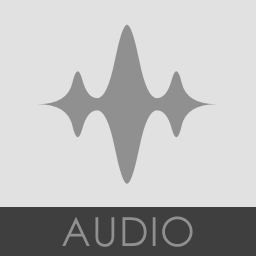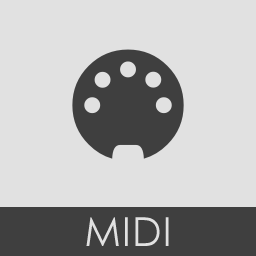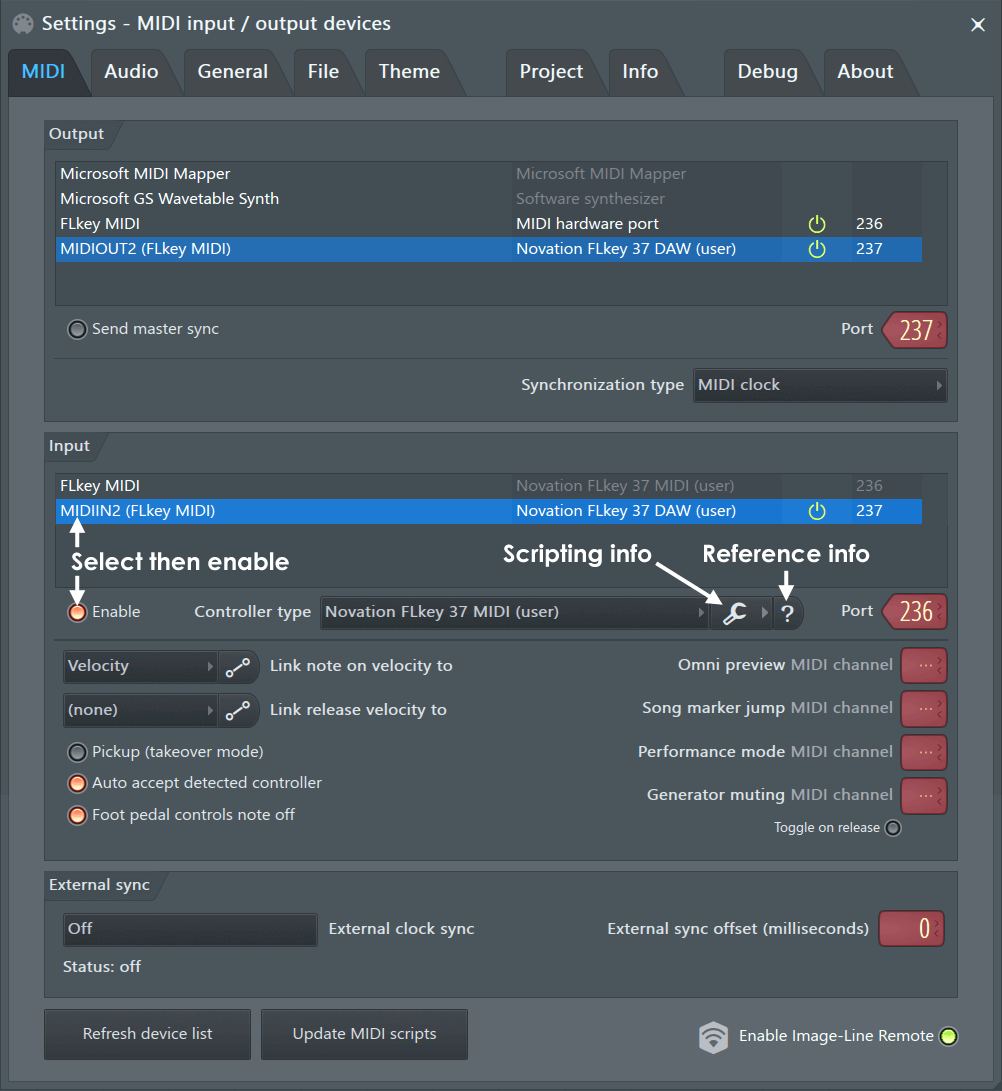SETUP WIZARD MIDI SetupSelect controllers Click the MIDI tab in the System Settings window. This section contains a list of software and hardware MIDI devices on or connected to your system that can be used for MIDI Input/Output. For example, hardware and software synthesizers, controller keyboards and 'loopback' devices. The most common controllers used by computer-based musicians today connect with a USB cable (rather than MIDI cable) and provide a piano-keyboard, pad or mixer-style interface.
1. Connect and install your keyboard/controller/synth in Windows / macOSMIDI is not an audio connection - The connections discussed on this page do not transfer audio, MIDI connections transfer note data, knob movements and program changes so that your controller can play software instruments and/or FL Studio can play connected MIDI hardware. To use sounds from an external synthesizer (while it is played by FL Studio) you will need to make MIDI connections (discussed here) AND audio connections to your audio device inputs so that FL Studio can record the sound/s that it triggers from the external MIDI hardware using a MIDI Out plugin. Cable types - You will either have a USB based keyboard/controller or hardware with 5-pin DIN MIDI connectors. Click here to see these connector types compared.
2. Set input and output MIDI devicesYou may want to select an Input (a controller that plays FL Studio instruments) or Output device (something that connects to your PC and receives note data from FL Studio).
Output - Port MappingThese options select a MIDI output interface so FL Studio can send MIDI signals to outboard gear (Synthesizer, Drum Machine, Sampler, etc). See the MIDI Settings page for more details. Input - Connecting External Controller/sIf you have a USB/MIDI keyboard or controller that you would like to control using FL Studio, you will need to change some settings in the Input section. This contains a list of controller devices that have been detected by Windows (see section 1).To activate a controller in FL Studio -
NOTE: For more detailed information on the rest of the settings in this section and further details on supported controllers go to the MIDI Settings page. Troubleshooting
Velocity curveIf you are using a MIDI Keyboard or Pad Controller then click on the Link note on to: Velocity Curve button. Here you can fine-tune the relationship between MIDI input velocity (how fast/hard you strike the keys/pad) and the velocity value sent to instruments. |






Comments
Post a Comment